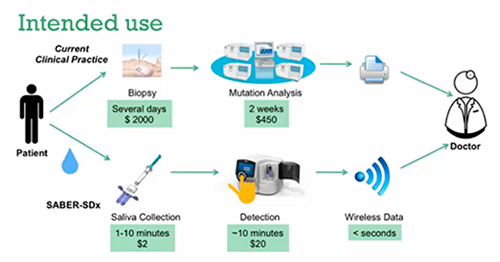
On the afternoon of January 21, 2016, Clinical OMICS magazine sponsored a webinar to discuss what is currently the hottest topic in the field of molecular diagnostics and possibly all of clinical medicine—liquid biopsy. In the December issue, we discussed how this cutting-edge test was able to capture noninvasively minute amounts of circulating tumor DNA (ctDNA) for disease diagnosis and the monitoring of cancer progression during and after chemotherapeutic treatment regimens. Due to positive feedback and increased interest in the topic, the editors of Clinical OMICs set out to find scientists who were actively using liquid
biopsies as part of their clinical research and asked them to describe their methods and data to our audience.
We found two experts who were utilizing vastly different methods of liquid biopsy to predict, diagnose, and track the progression of disease in patients. John Martignetti, M.D., Ph.D., associate professor of genetics and genomic medicine at The Mount Sinai Hospital, gave the first presentation and described how he is using ctDNA to predict in real time the progression and outcomes for ovarian and endometrial cancers.
The second presentation was given by David Wong, D.M.D, DMSc, associate dean for research at the UCLA School of Dentistry, who discussed how an entirely noninvasive biofluid like saliva can be utilized for systemic disease detection.
For those who want just a brief overview of the presentations, here follows a recap of some key points about why liquid biopsies represent a significant advancement in molecular diagnostics and patient care.
For the rest of this article, click here.











